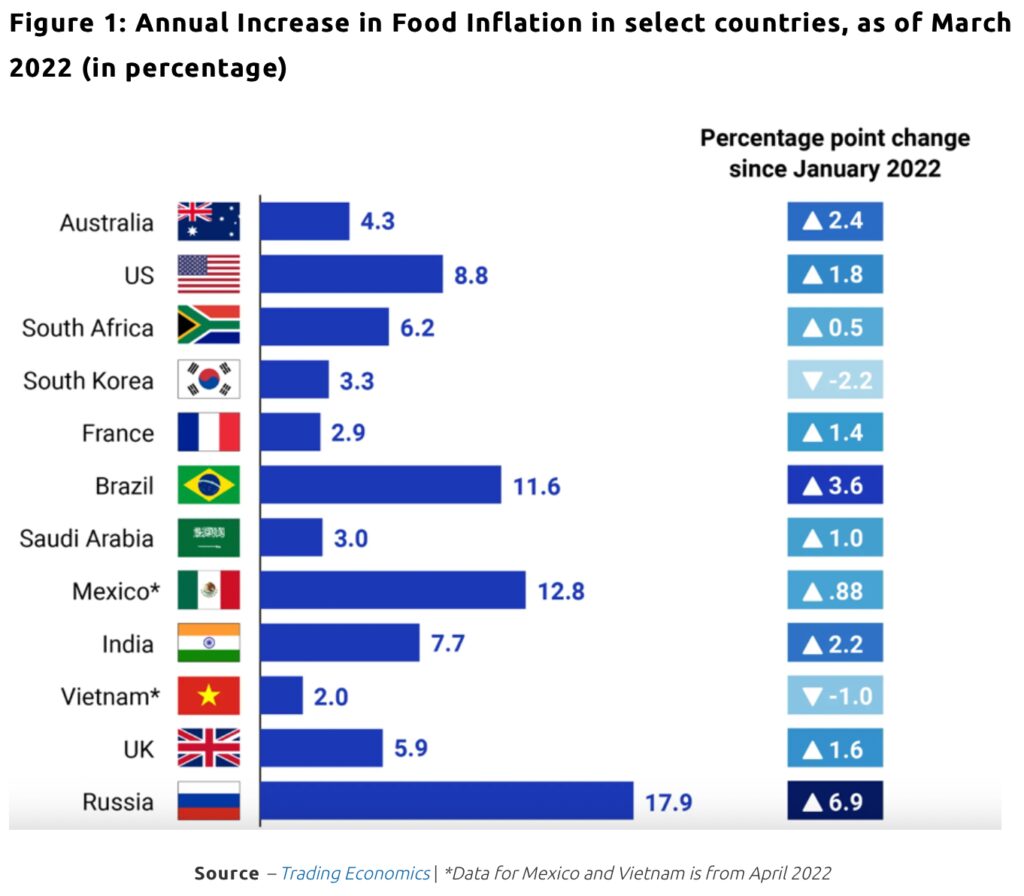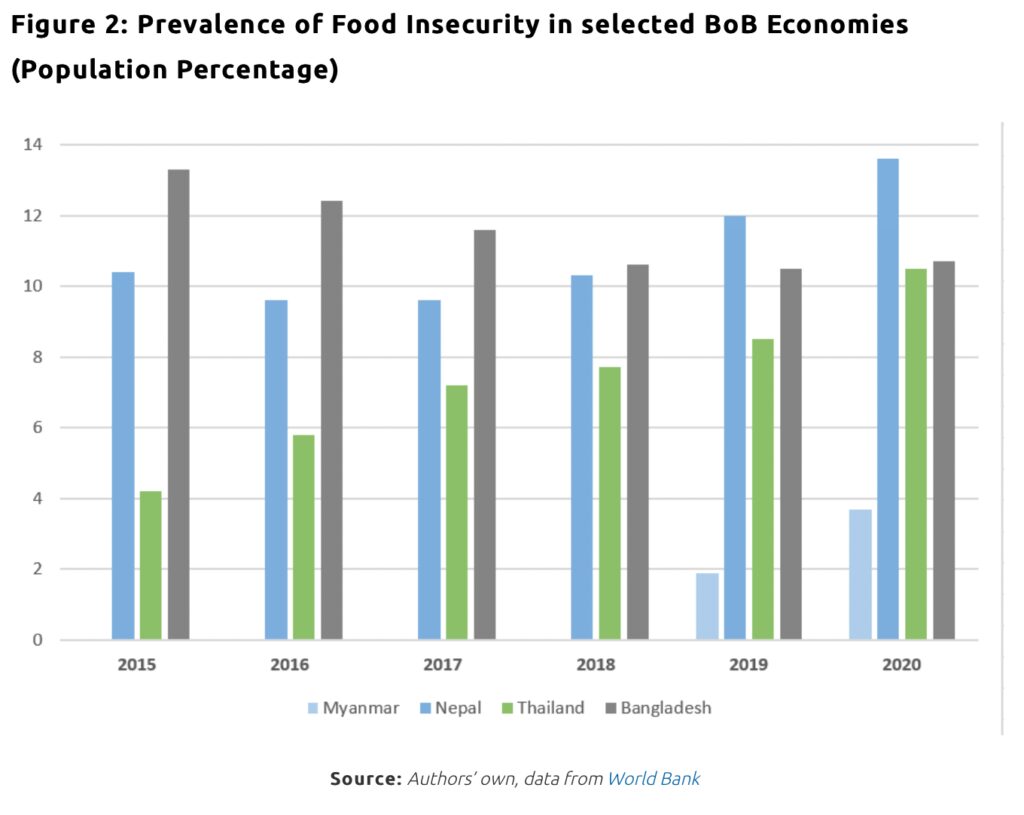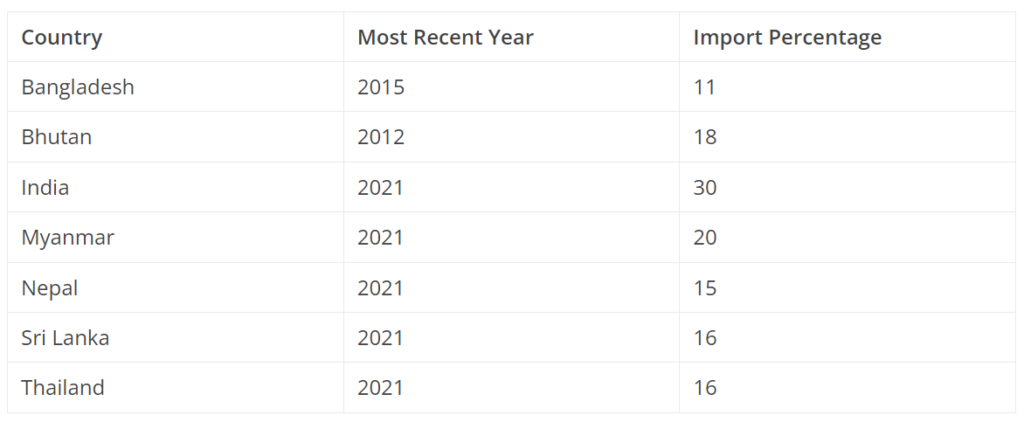Ukraine-Russia Conflict: Impact On South Asia – Analysis
The South Asian neighbourhood is in flux. Sri Lanka and Pakistan are facing economic headwinds, with the former having gone through a full-blown economic collapse and the latter facing huge external debts, power shortages, and extreme inflation.
Both are awaiting a bailout from the International Monetary Fund (IMF). The IMF has also sanctioned a precautionary loan of US $4.7 billion to Bangladesh amidst the precarious macroeconomic situation in the country, with high inflation and volatility of the Bangladeshi Taka. A post-coup Myanmar sees a shutdown of businesses and a massive spike in unemployment; and Nepal, too, sees widening trade deficits and declining foreign exchange reserves.
To be sure, the Ukraine-Russia conflict has thrown the energy markets into a crisis in several Global South nations. In addition, the supply cuts by edible-oil exporting countries, alongside the rise in fuel prices, have led to a surge in food prices, making food security a primary concern, especially for the vulnerable sections of society.

As the world completes almost three years of living with COVID-19, the virus continues to haunt hospitals, airports, markets, world economies, and people’s minds. Moreover, towards the end of 2022, the COVID-19 surge in China—the second-largest economy covering approximately 18 percent of the global GDP, and inextricably linked across Global Value Chains (GVCs)—has further dampened the global economy, especially the developing nations in the Bay of Bengal (BoB).
Food security
Food security is an area that became prominent recently because of the Russia-Ukraine war and the resulting food crisis. Ukraine and Russia play a significant role in the global food supply chains, further affecting low- and middle-income countries and vulnerable populations already grappling with hunger in the post-pandemic world.
Since both countries exported more than one-third of the world’s wheat and barley, and about 70 percent of sunflower oil, governments around the world were severely hit as the war stopped exports of around 20 million tons of Ukrainian grain. An estimated 6 million tons of agricultural commodities were exported monthly to Asia, Africa, and the Middle East. As of June 2022, this number had dried up to a fifth of its original value. According to the United Nations’ (UN) Food and Agriculture Organization (FAO), global food prices have risen by 20 percent. It further predicts a rise in the undernourished population to be between 7.6 to 13.1 million, because of the conflict situation and its ripple effects on food prices and availability.

Additionally, the economic meltdown in Sri Lanka wreaked havoc on the food security of the local population; Bangladesh could be on the verge of facing a similar food security danger soon. For Sri Lanka, the sudden switch to organic farming in 2021 worsened its trade performance in the agricultural sector. The island nation had to import sugar, rice, and various other commodities, including intermediate goods in which the economy had had a previous surplus. By 2022, the tea industry, which was a major commodity of exchange, incurred losses of approximately US $425 million, further worsening the economy’s foreign exchange situation. In this context, it becomes imperative for regional groupings to set up safeguards against crises where their food security is affected by geopolitical events and domestic macroeconomic threats.
The idea of a food bank for the Bay of Bengal Initiative for Multi-sectoral Technical and Economic Cooperation (BIMSTEC) countries modelled on the Association of Southeast Nations (ASEAN) Food Bank is a good start as it will aid in stabilising prices. Recently, in November 2022, India hosted the second Agriculture Ministerial-level meeting of the BIMSTEC nations, where it urged the member countries to develop a regional strategy for transforming agriculture and promoting millets into the food systems. Promotion and intra-regional trade of food items such as millets, where these countries have surplus production, can help ameliorate food insecurity to a large extent.
Energy crisis
Analysing the data on energy imports, we see that all the countries in BIMSTEC, especially India, Myanmar, and Bhutan, rely heavily on energy imports. The trade dependency on fuel is a major curse for the region, making it highly vulnerable to exogenous macroeconomic shocks. The Russia-Ukraine conflict underscores the importance of nations having self-reliance regarding energy.

Unable to set in motion the transition to renewable energy, alongside heavy dependence on fuel imports, Bangladesh, especially, has been placed in a tough spot concerning energy security. The Russia-Ukraine conflict has added more fuel to this fire. With energy prices climbing upwards and subsidy bills increasing, the fiscal balances and current account deficits have been worrisome for Bangladesh’s economy. The government had to finally put in place some austerity measures. The domestic prices of diesel, kerosene, octane, and petrol were increased by 42.5, 42.5, 51.6 and 51.1 percent, respectively, to Tk 114, Tk 114, Tk 135 and Tk 130 in August 2022 — the highest jump in almost 20 years, achieving price parity with its neighbours such as India, China, and Nepal.
Despite the BIMSTEC countries having developed a ‘Plan of Action for Energy Cooperation in BIMSTEC’ in October 2005 and also having signed a Memorandum of Understanding (MoU) for the establishment of the BIMSTEC Grid Interconnection in August 2018, the absence of required infrastructure and adaptive power market, the lack of synchronisation of the grid system, the lack of financial policies, and other related issues have made progress in energy cooperation slow among the countries in the region.
Regional economies have huge potential to invest in research for green transition technologies, which can help them have self-reliant energy markets. For instance, FDI from Japanese firms has constantly seen more impacts and spillovers in the Indian economy. If Japanese firms’ economies of scale and their potential in developing different green energy technologies could be fully utilised, it would reduce the regional dependence on China, which is currently the dominant player in the domain of solar energy. At the 27th Conference of Parties (COP27) in 2022, India unveiled its long-term strategy highlighting its commitment to phasing out all forms of fossil fuels, including coal and oil, by 2070. Led by India, the Bay of Bengal region can lead the way in innovations in renewable forms of energy such as solar and wind.
